Out of Mung Beans? Check Out The Top 12 Mung Bean Substitutes
Are you craving your favorite mung bean recipe but finding that there are no mung beans to cook anymore?
Mung beans are a popular ingredient in many different types of dishes, from soups to stews and even desserts.
They are a nutritious, protein-rich ingredient that is highly versatile and easy to cook with.
But what if you can’t find mung beans at the store? Don’t worry, there are plenty of tasty substitutes with a similar flavor and texture.
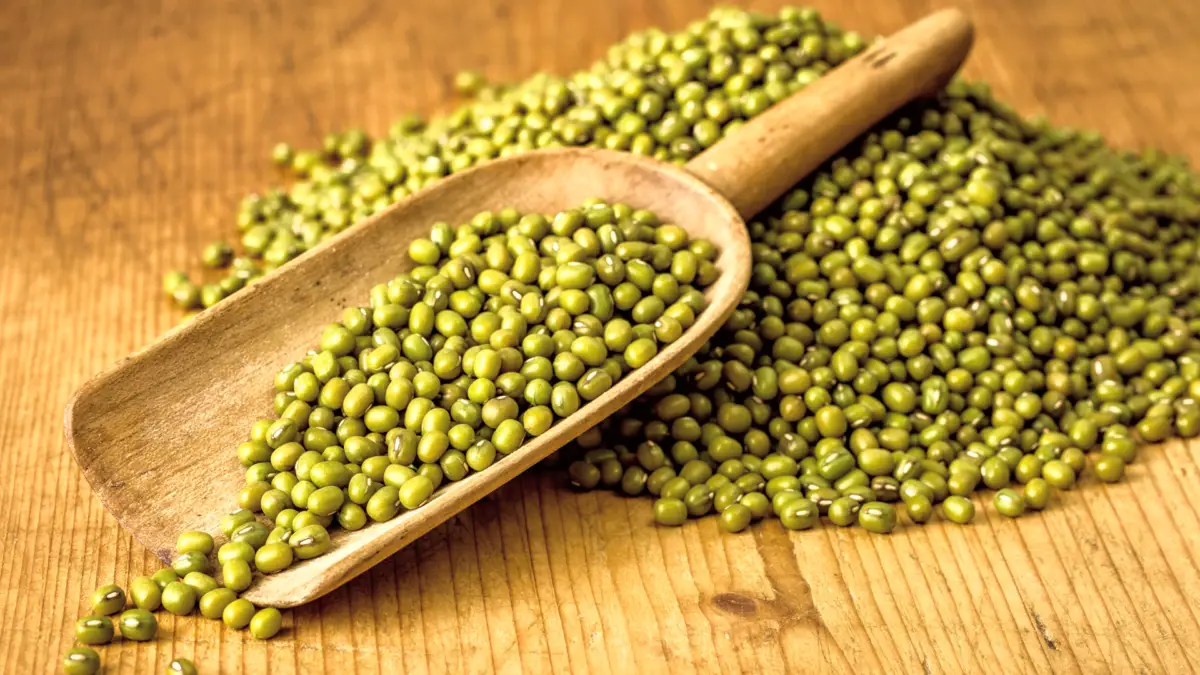
There are many substitutes for mung beans out there, but there’s only one that really stands out.
The best substitute for mung beans is lentils, as they are widely available and have that delicate, nutty flavor similar to mung beans. Even though these seeds can be used in soups and curries, they have a stronger peppery and earthy flavor that makes them taste different from mung beans.
In this blog post, I will help you cook your favorite mung bean dish without using any mung beans but by using their best substitutes.

Check out our new cookbook
Bitemybun's family recipes with complete meal planner and recipe guide.
Try it out for free with Kindle Unlimited:
Read for freeIn this post we'll cover:
What are mung beans?
I’ve already written a comprehensive article about mung beans, so let’s just have a quick recap on this.
Mung beans are small, green legumes that are popular in Asian cuisine. They are often used in soups, stews, and curries.
Mung beans are high in protein and fiber. Despite their size, they are a good source of vitamins and minerals, such as iron, potassium, and magnesium.
If you’re wondering about the taste of mung beans, it is nutty and a little bit sweet. Raw mung beans taste like crisp legumes with an earthy and nutty flavor. People describe the taste as slightly similar to peas.
But when cooked, the mung beans blend in with the other ingredients in the dish, thus their nutty taste isn’t overpowering at all.
In terms of texture, mung beans are tender and soft to the bite. Unlike other legumes, they do not need much soaking before cooking.
Pairing them with vegetables, meats, spices, and even some of your favorite foods will improve their flavor even more.
Here is one of my favorite mung bean dishes: Easy Vegan Mung Bean Egg Recipe with Just Egg
What makes a good substitute for mung beans?
Now that we know what mung beans are let’s discuss what to look for in a suitable substitute.
When we talk about substitutes, the first thing you should consider is their texture.
Mung beans have a firm yet tender texture when raw. So, their substitute should also have a soft but not overly hard texture in raw form.
This is to ensure that your dish will still have that “bite” to it.
However, once cooked, mung beans are soft and mushy. So, it’s important to look for a substitute that also turns tender, soft, and mushy when cooked.
The second thing you should consider is the flavor. The substitute should be able to complement the other ingredients in your dish and not overwhelm them. The taste should be mild, earthy, and lightly nutty.
Luckily, many legumes are somewhat similar when it comes to taste, so finding substitutes isn’t too hard.
And lastly, the substitute should be easy to find. You don’t want to go on a wild goose chase just to find the perfect mung bean substitute, right?
With that said, let’s move on to the best substitute for mung beans.
Best mung bean substitutes to try
Here are the best mung bean substitutes that you should definitely try the next time you cook your favorite mung bean dish.
Lentils
My favorite mung bean substitute is lentils, especially brown and green lentils, because these have the same soft mushy texture once cooked.
Lentils are a type of legume that is small, round, and flat. They come in a variety of colors, including green, brown, yellow, red, and black.
Lentils are very versatile and can be used in soups, stews, curries, salads, and even as a side dish.
Since lentils are so widely available (one of my favorite brands for legumes is Goya), they also work well as mung bean substitutes.
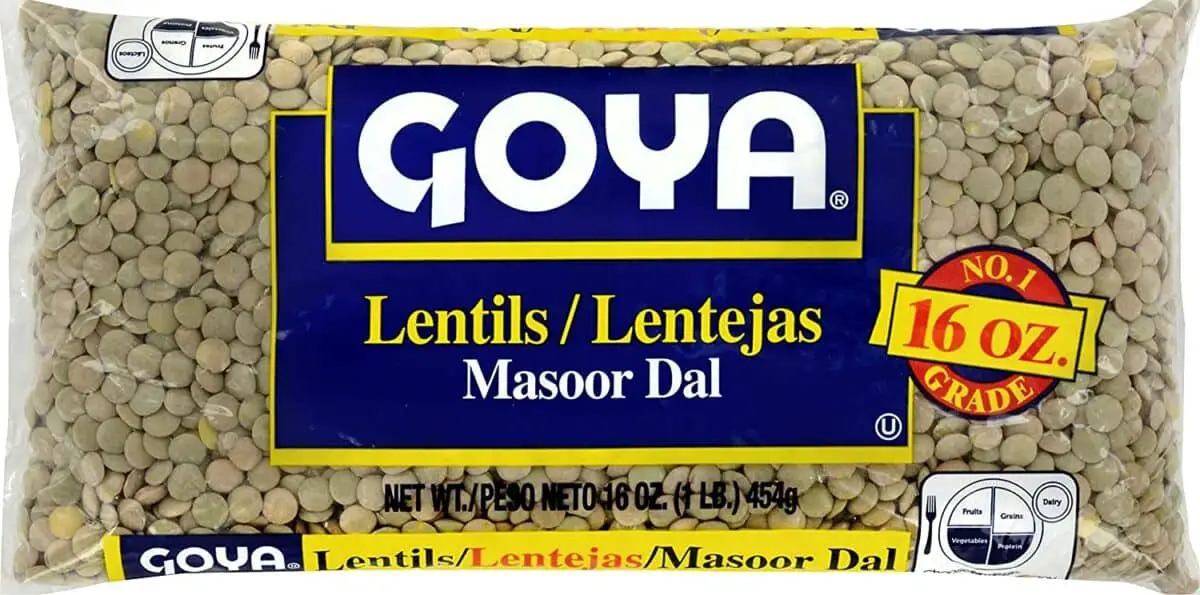
Lentils also taste nutty and mild.
These legumes can be used in curries and soups, but they also have a stronger peppery and earthy flavor that adds additional flavors despite the fact that they don’t taste exactly like mung beans.
To substitute lentils for mung beans, use a 1:1 ratio.
Snow peas
Snow peas are one of the best substitutes for mung beans. They have a similar texture and flavor, so they will definitely complement your dish.
Snow peas are also very versatile. You can use them in soups, stir-fries, curries, salads, and even as a side dish.
Buy them in the supermarket or at the fresh grocer, or grow them yourself with good quality snow pea seeds.
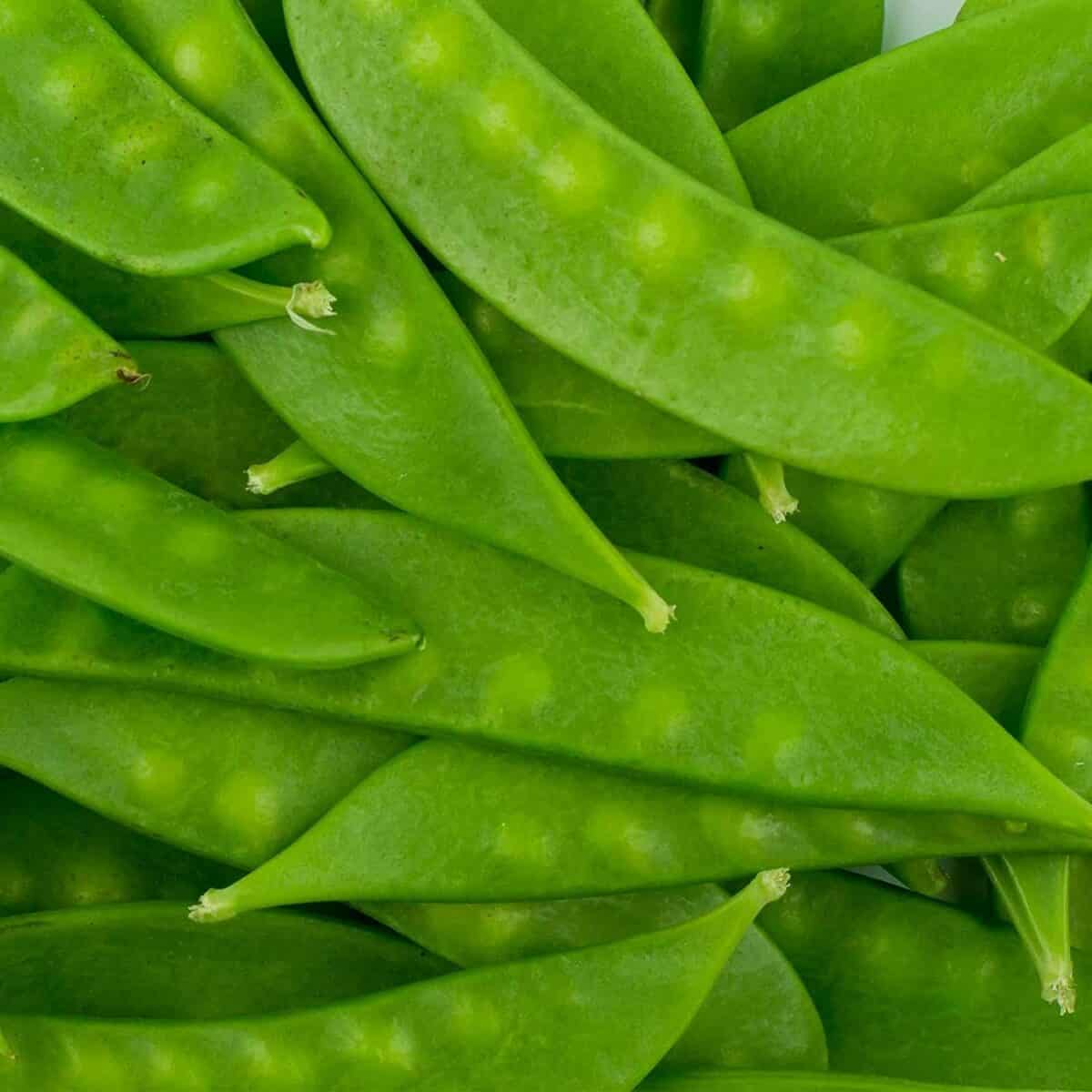
To substitute snow peas for mung beans, simply follow the recipe as is and substitute the mung beans with an equal amount of snow peas.
The advantage of using snow peas is that in their raw form, they’re nice and crunchy, whereas if you’re using canned snow peas, they tend to turn a bit soft and mushy, just like mung beans.
So if you’re looking for an alternative that has the same texture as mung beans, then snow peas would be your second-best choice.
Adzuki beans
Adzuki beans are small, red legumes that are popular in Asian cuisine.
These beans primarily have a red color, but they do have a moderate, nutty, beany flavor.
They also have a sweet flavor and are often used in desserts and sweet dishes. I like to buy organic adzuki beans.
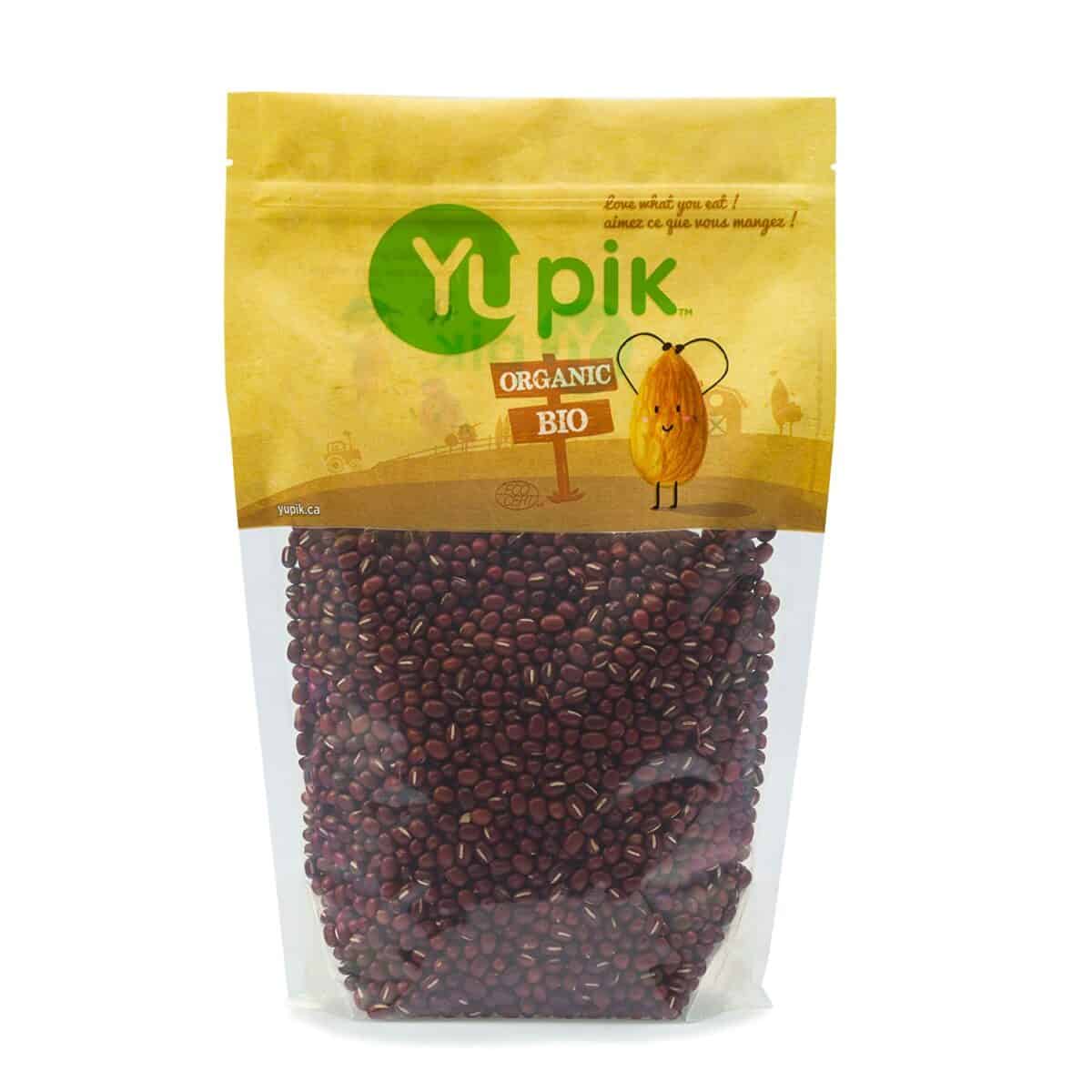
The adzuki beans are used to make the famous red bean paste (Anko) used in many desserts in Japan.
Adzuki beans are also very versatile, and you can use them in soups, stews, curries, salads, and even as a side dish.
Compared to mung beans, Adzuki beans have a stronger flavor and tend to hold their shape better when cooked, so they’re more firm.
However, because of their sweet flavor, they also complement many savory dishes as well.
To substitute adzuki beans for mung beans, you can use a 1:1 ratio and use it the same way as you would when cooking mung beans.
Black mung beans
Vigna mungo, also called black gram or black mung beans, is a great substitute for green gram, which is used more often.
Although they are very similar, black gram has a more earthy taste.
This bean is frequently used to make soups, stews, bean paste, and even curries. It gives the food a richer, nuttier flavor, and some people prefer it.
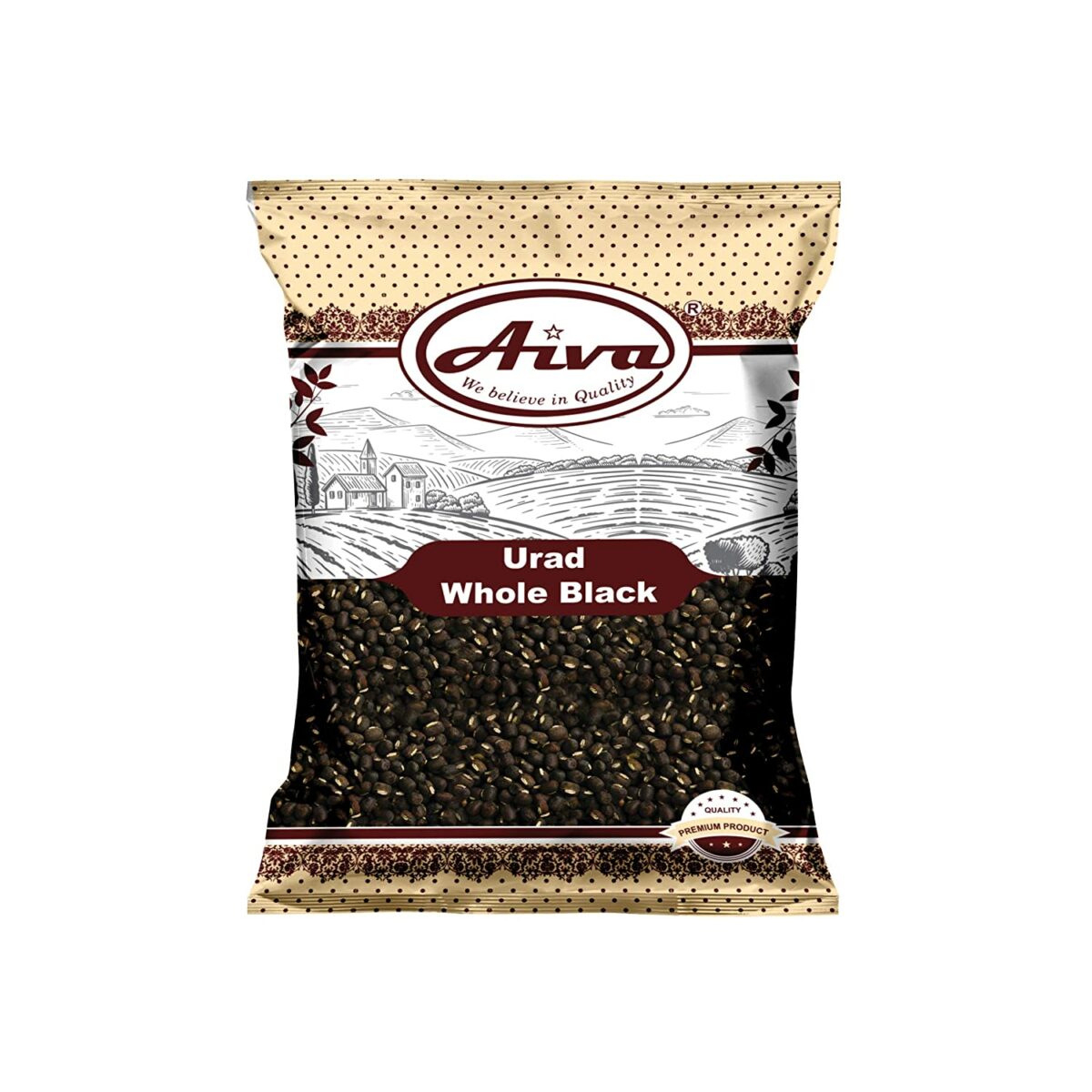
You may sprout these black mung beans and utilize them the same way you would use green sprouted mung beans.
The appropriate substitution for green mung beans and black mung beans is a 1:1 ratio.
The reason I didn’t include the black mung beans as my number one substitute is that they’re hard to find.
They are available online or in speciality grocery stores.
Peeled split mung beans
Peeled split mung beans are simply mung beans that have been hulled and split in half.
Peeled split mung beans cook faster than whole mung beans because they have a smaller surface area.
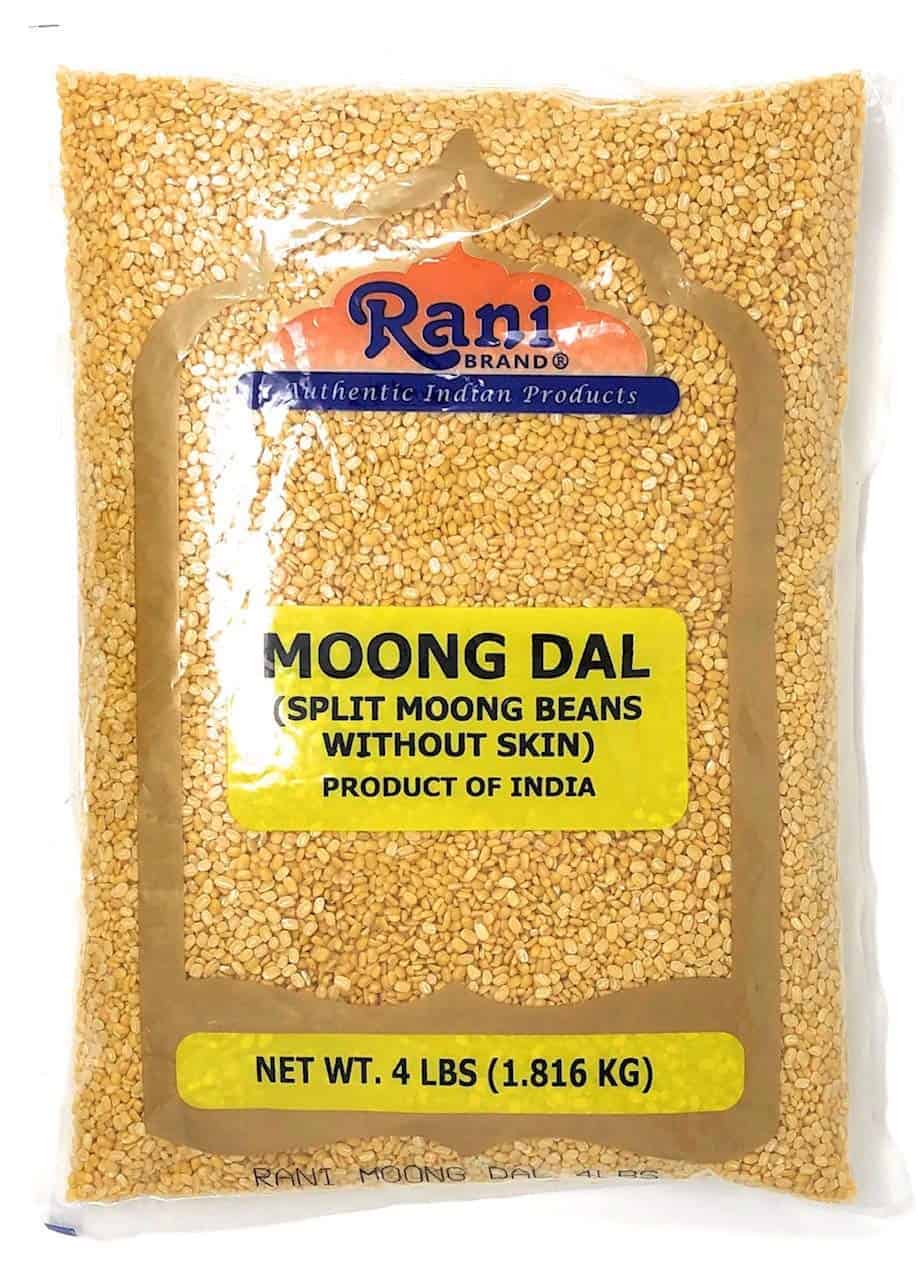
These taste best as part of curry and soup recipes as well.
Unlike the other mung bean substitutes, these ARE mung beans, so they have a mild and earthy flavor.
When cooked, they have a delicate texture and are mild and mildly sweet.
Use these beans to make salads, curries, soups, and other foods instead of mung beans.
To substitute peeled split mung beans, like these Rani Moong Dal beans, for whole mung beans, use a 1:1 ratio.
Pinto beans
Pinto beans, also known as Phaseolus coccineus or strawberry beans, are a type of kidney bean.
They get their name from their red color and oval shape, which resembles a strawberry.
These beans have a smooth, creamy flavor that is mildly sweet in flavor. Pinto beans are easy to find, also online, and commonly used in soups, stews, curries, and salads.
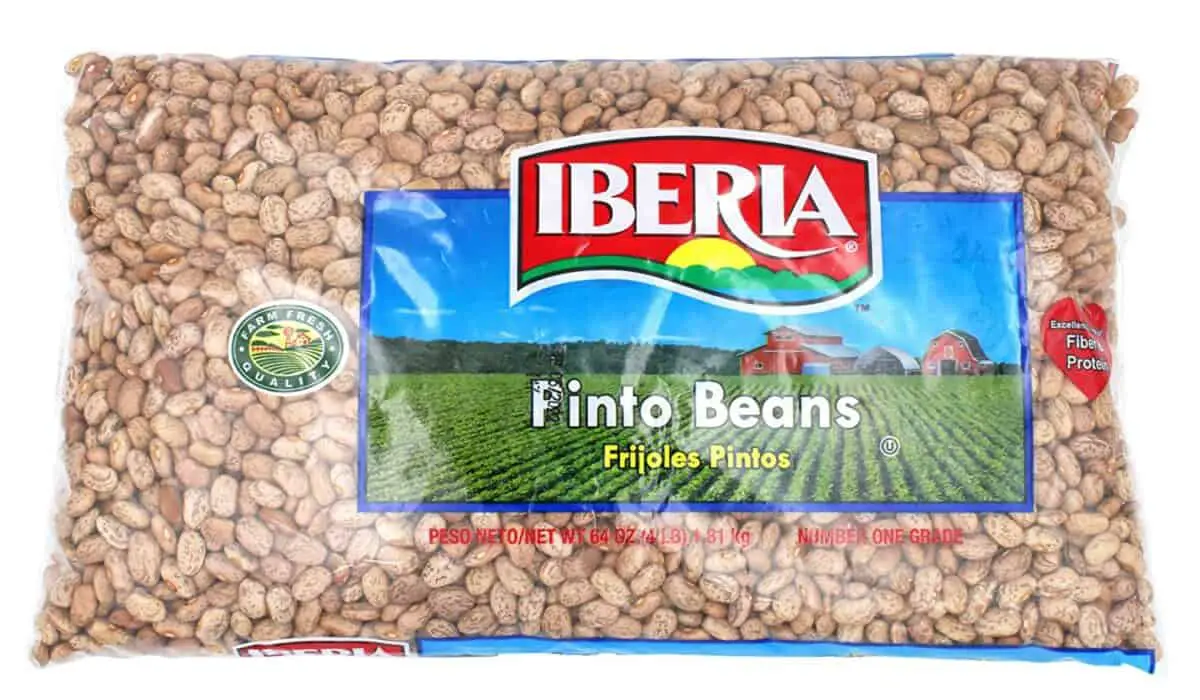
Compared to other mung bean substitutes, pinto beans have a much stronger flavor.
However, they do complement many Asian and Mexican-inspired dishes with their rich, nutty flavor.
Canned pinto beans are the easiest substitute for mung beans.
Simply substitute them in your recipes as you would with mung beans and adjust the cooking time to account for the texture of the beans.
The substitution ratio is 1:1, so you can substitute pinto beans for mung beans and use them in the same manner.
So if your recipe calls for mung beans, feel free to substitute pinto beans with equal amounts.
Borlotti beans
Borlotti beans, also called cranberry beans, are a type of Italian kidney bean that is large, white and red, and oval-shaped.
They have a firm texture and a nutty flavor. These beans are often used in soups, stews, casseroles, and salads.
These beans also have a mild, somewhat sweet flavor and a silky texture.
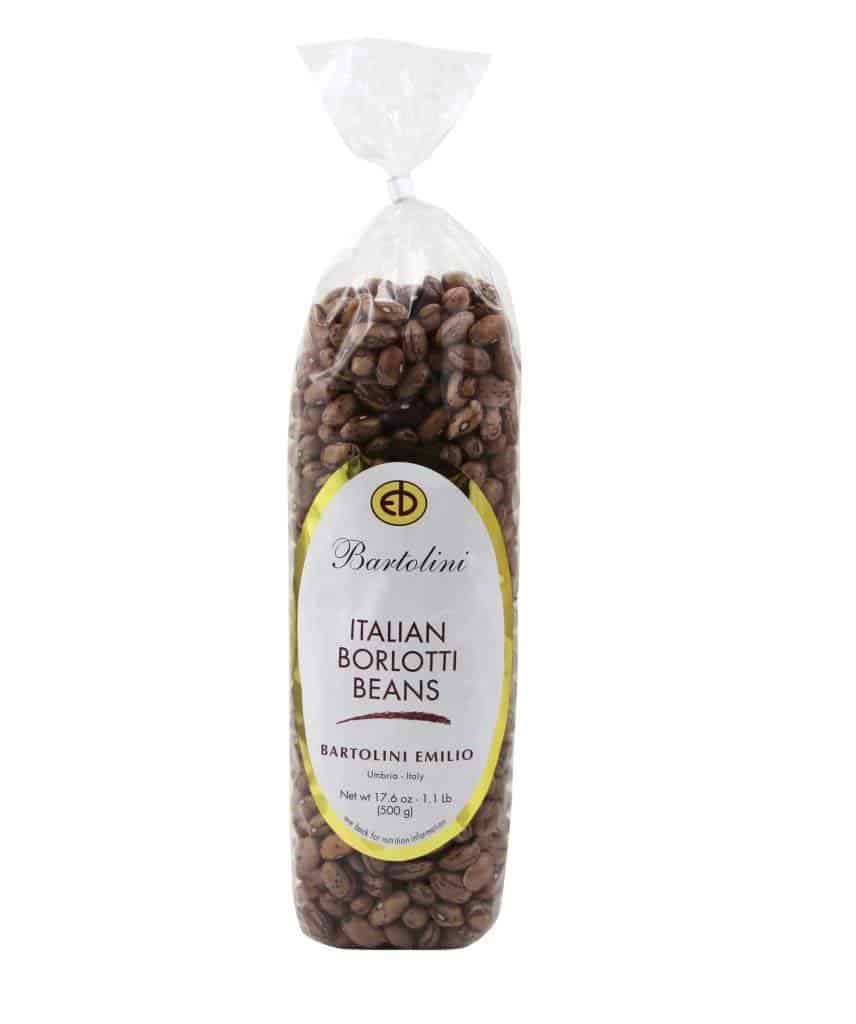
Borlotti beans are a great substitute for mung beans, especially if you are looking to experiment with different flavors and textures.
To substitute borlotti beans for mung beans in your recipes, simply use a 1:1 ratio and substitute them as you would with mung beans.
Just keep in mind that borlotti beans are larger. Find them online like these from Bartolini.
Green kidney beans / small flageolet beans
Small flageolet beans, also known as green kidney beans, are a variety of kidney bean that is small, light green, and oval-shaped.
These beans have a delicate flavor that is nutty and slightly sweet.
They are often used in salads, soups, stews, and casseroles, and they actually look similar to mung beans!
Try these green flageolets from Sabarot available online.
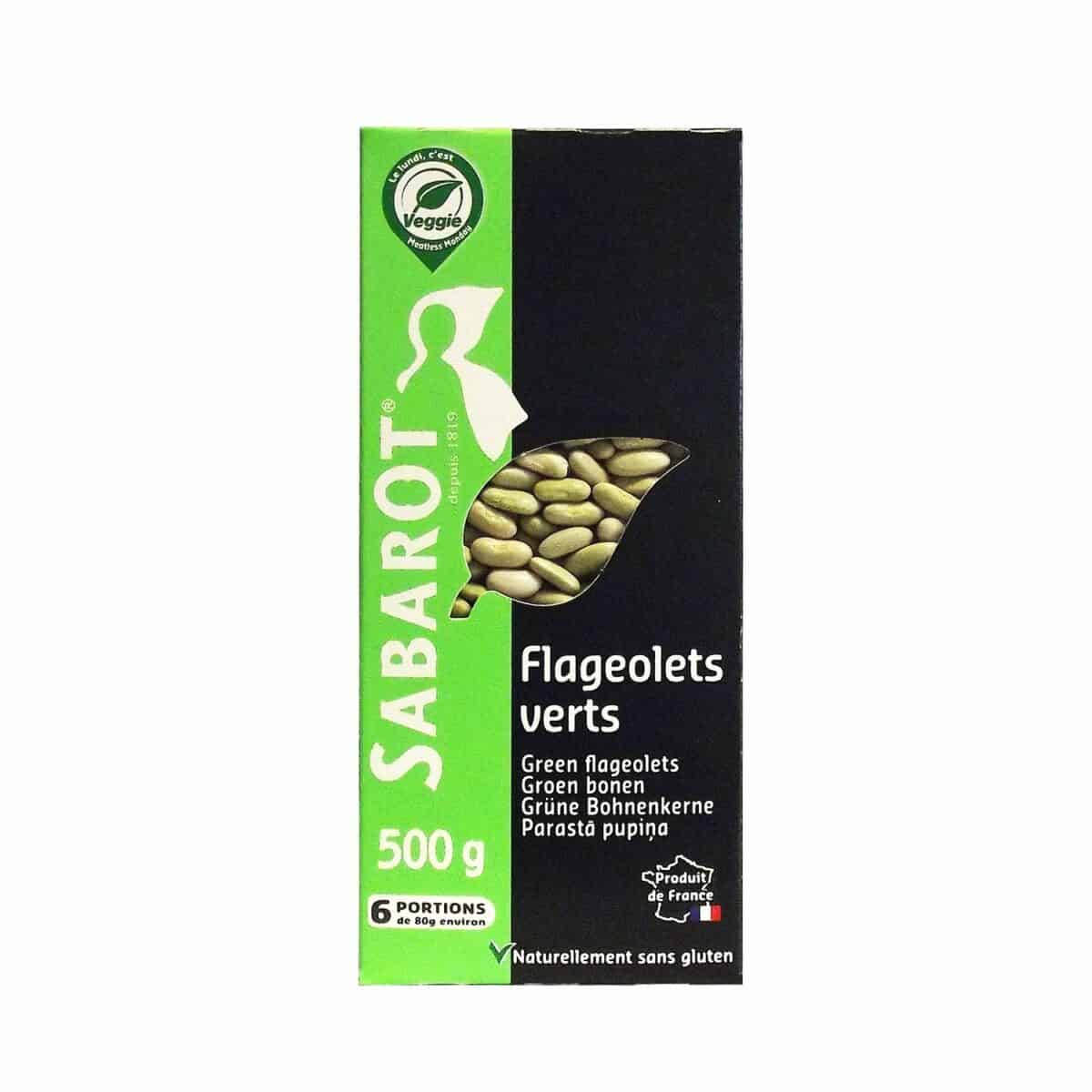
Flageolet beans have a lot of fiber, which is important for having regular bowel movements.
Half of your daily requirement for fiber can be satisfied by a serving of flageolet beans, which weigh about 7 ounces.
To use green kidney beans as a mung bean substitute, substitute them at a 1:1 ratio, and use them in the same way that you would use mung beans.
Remember to account for any change in texture or flavor that may occur (although they taste very similar!)
Pigeon peas
Pigeon peas are a type of legume that is small, round, and green. They have a nutty flavor and are often used in curries, soups, stews, and even as a side dish.
The young pods will be brilliant green, and as they mature, they will turn a dark brownish-purple color with brown striations or blotches.
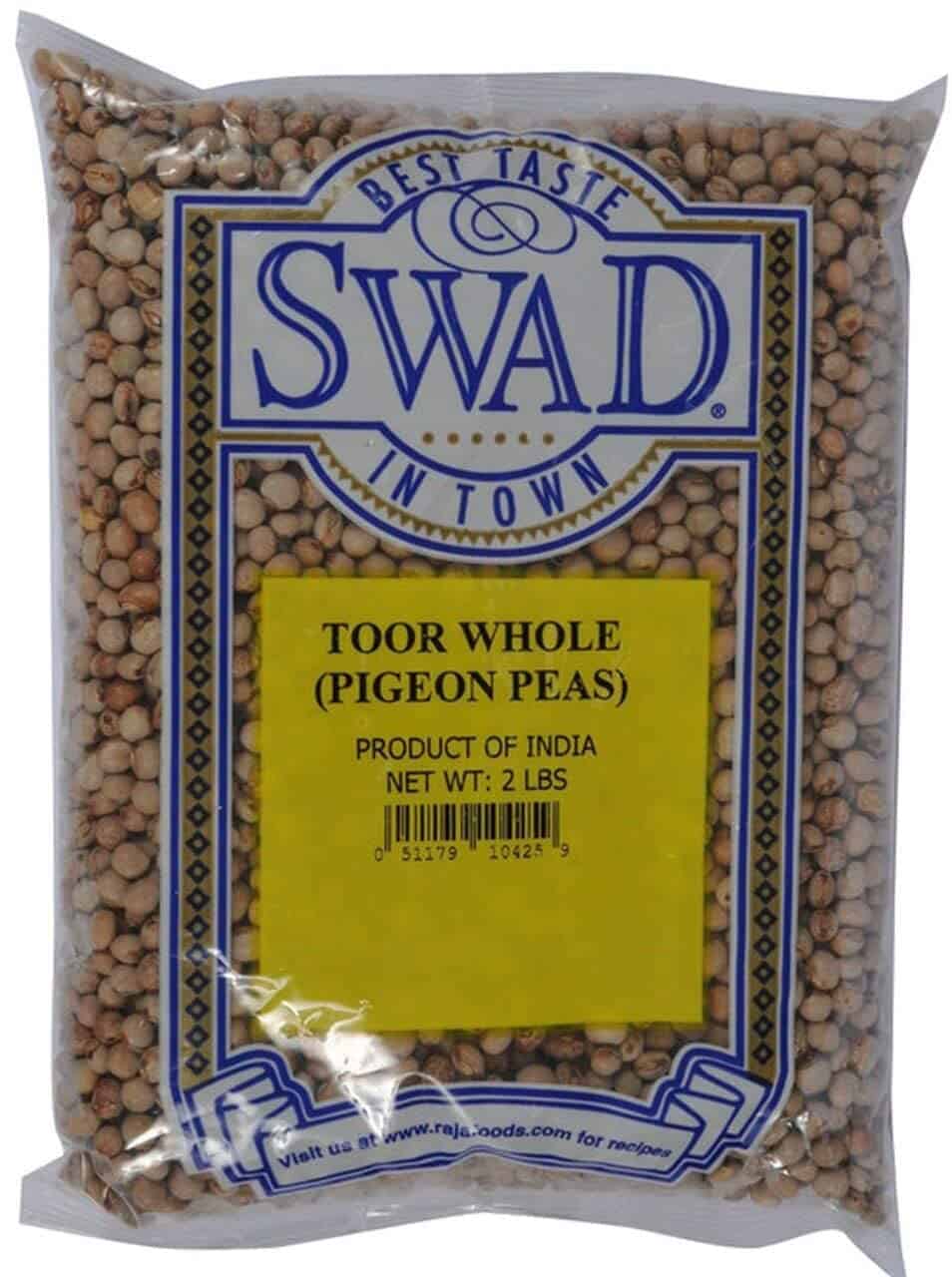
They are frequently referred to as green pigeon peas when they are offered fresh. You can buy them online for your own cooking.
You can use pigeon peas instead of mung beans in your cooking to get a similar flavor and texture.
Just substitute equal amounts of pigeon peas for mung beans in any recipe, and follow the same prep instructions.
Black-eyed peas
Black-eyed peas, also known as cowpeas, are a type of legume that is small and oval-shaped. They have a beige color and a small black “eye” mark on their inner curve.
These legumes have a mild flavor that is slightly earthy and nutty. They are often used in soups, stews, and curries.
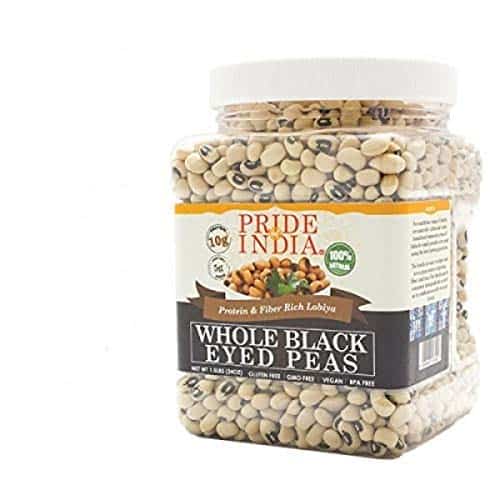
Like mung beans, black-eyed peas are a great source of fiber, as well as protein and carbs. They are also low in fat and calories and rich in essential vitamins and minerals.
Black-eyed peas are a great substitute for mung beans because they have a similar flavor and texture.
Simply substitute them at a 1:1 ratio, and use them in the same way that you would use mung beans.
I like to buy beans like black eyed peas in bulk to save on packaging.
Chickpeas
Chickpeas, also called garbanzo beans, are not the best substitute for mung beans if size is of concern.
However, if you are looking for a substitute with similar nutrients and textures, chickpeas can be a great option.
Chickpeas are a type of legume that have a beige color and a mild, nutty flavor. They are often used in soups, stews, stir-fries, and salads.
Like mung beans, chickpeas are a great source of fiber and protein, as well as essential vitamins and minerals.
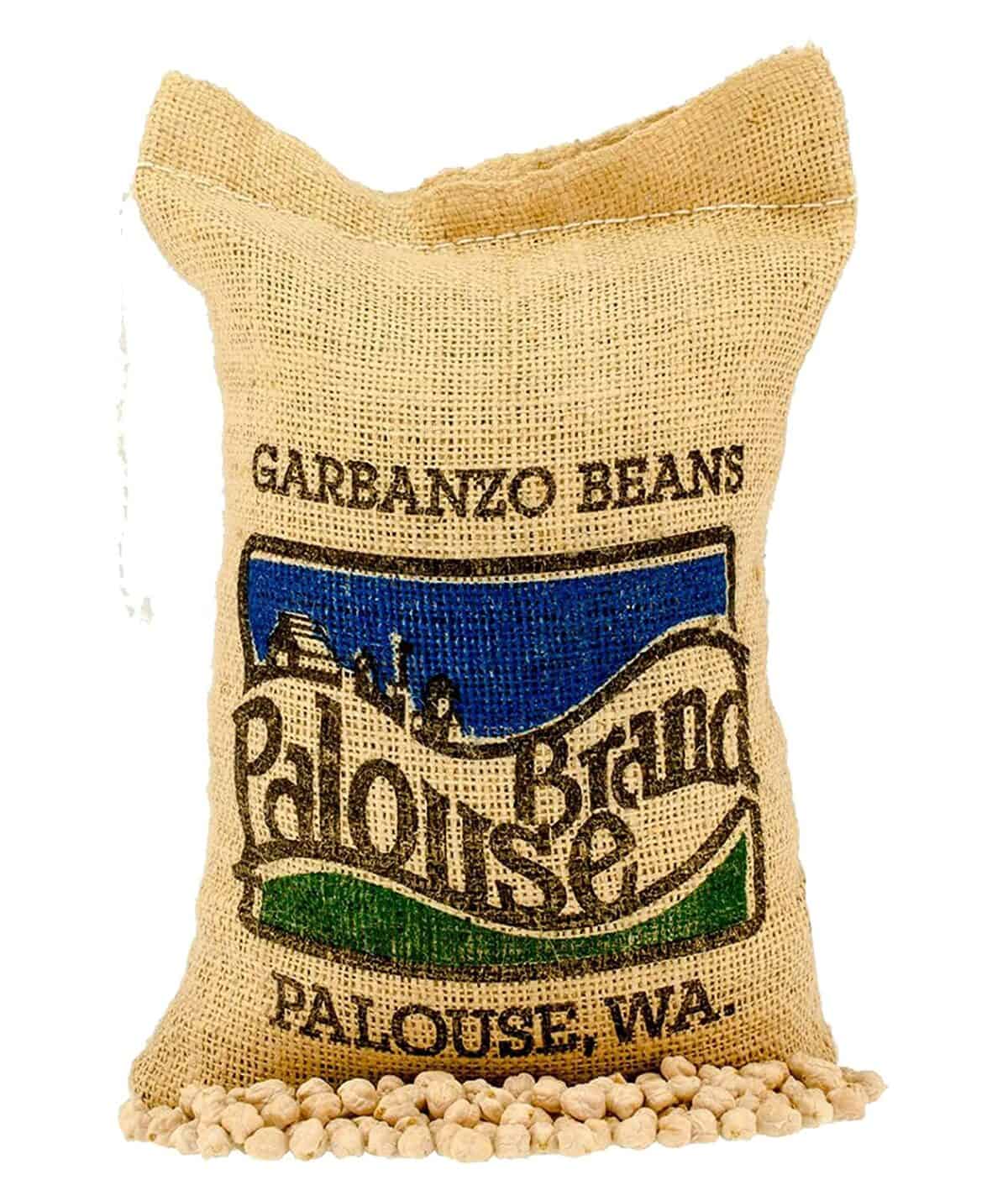
But these legumes are larger than mung beans and have a different texture, so you may want to experiment with different cooking methods.
These chickpeas from Palouse come in a reusable burlap sack.
Substitute chickpeas at a 1:1 ratio when using them in similar recipes.
Sunflower sprouts
Sunflower sprouts are not beans. However, they make a great substitute for mung beans in salads, stir-fries, and soups, where the flavor is more important than shape and appearance.
When used as a garnish, they provide a crunchy texture, just like bean sprouts.

These sprouts are rich in vitamins A and C and also contain iron, calcium, protein, and fiber.
They have a mildly nutty flavor and can be easily incorporated into any dish that calls for mung beans.
You can purchase fresh green sunflower sprouts in most places you buy other sprouts.
Alternatively, you can grow your own sprouts at home by soaking sunflower seeds (you can find them easily online) overnight and then rinsing and draining them several times a day until they are fully sprouted.
Unfortunately, sunflower sprouts aren’t the best mung bean substitute because you can only use them in salads and as a garnish for soups and stir-fry.
Therefore, you can’t cook them in stews and curries like you can with mung beans.
However, sunflower sprouts are a great option if you are looking for a substitute that will retain most of the flavor and nutritional value of mung beans.
So why not give them a try in your next dish?
FAQs
Is mung bean the same as yellow split peas?
No, mung beans and yellow split peas are two different types of legumes.
Mung beans are small, oval-shaped beans that have a sweet and nutty flavor, while yellow split peas are larger, longer beans that have a milder flavor.
Both mung beans and yellow split peas are low in fat, high in protein, and can be used to make a variety of dishes such as soups, salads, and curries.
What other names does mung bean have?
Mung bean is also known as green bean, mongo, moong, moog dal (in Bengali), mash bean, munggo or monggo, green gram, and golden gram.
It depends on the country and region where you live.
Can you substitute mung beans for other types of beans?
Yes, you can substitute mung beans for other legumes, such as chickpeas, black-eyed peas, and lentils.
However, you may need to adjust the cooking time depending on the substitute you choose.
Do you have to soak mung beans before cooking?
The good news is that you don’t need to soak mung beans before cooking, although some people prefer to soak them overnight to reduce cooking time and improve digestibility.
However, you should follow any specific instructions included in the recipe.
You can get away with only soaking mung beans for a short time if you need to cook them quickly.
However, you can’t do this with most dry mung bean substitutes.
Bigger beans, such as chickpeas and black-eyed peas, should be soaked overnight, while lentils can be soaked for a few hours.
Final takeaway
While mung beans are a delicious legume, there are plenty of substitutes that you can use if you find yourself in a bind.
But if you ask me which is the best one, then it will be lentils since they’re soft and mushy when cooked.
But still, it’s all up to you. Try them all and discover which one will suit your taste the best. You’ll never know. You might like it better than your mung beans.
So, next time you’re in the mood for a mung bean dish but don’t have any on hand, don’t worry! These substitute legumes will do the most awesome trick!
Read next: Don’t have beef broth or want to go vegetarian? Here are 8 substitutes
Check out our new cookbook
Bitemybun's family recipes with complete meal planner and recipe guide.
Try it out for free with Kindle Unlimited:
Read for freeJoost Nusselder, the founder of Bite My Bun is a content marketer, dad and loves trying out new food with Japanese food at the heart of his passion, and together with his team he's been creating in-depth blog articles since 2016 to help loyal readers with recipes and cooking tips.
